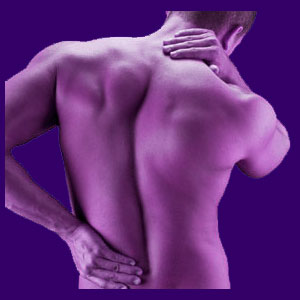
Scoliosis neck pain is a rare symptomatic expression that is most commonly associated with severe upper thoracic spinal curvatures. Only in a few cases does the scoliosis actually reside in the anatomy of the cervical spine itself. Although scoliosis is virtually always known to be innocent and asymptomatic in its mild to moderate forms, it is still implicated for creating neck pain in some unfortunate patients.
The reasons why neck pain might exist mirror those in other scoliosis locations. These explanations include neurological compression, vertebral interactions, intervertebral disc pathologies, spinal instability and soft tissue problems, such as laxity, tension and muscular imbalances.
This commentary examines the incidence of cervical pain that is caused, or contributed to, by scoliosis conditions in the upper back or neck. if you are suffering scoliosis neck pain, then this discussion is perfectly suited for your research needs.
Diagnosis of Scoliosis Neck Pain
Scoliosis is seldom seen in the cervical spine itself. In cases, where it does exist, the degree of curvature is usually mild. Scoliosis is most often seen in the middle back and when these thoracic curvatures are severe, they can easily influence the functionality of the neck region, in the skeletal, neurological and muscular realms.
Diagnosis of scoliosis may or may not explain pain in the neck. In fact, many cases of innocent side-to-side curvature are unjustly implicated as the cause of neck discomfort. Meanwhile, some scoliosis syndromes are deemed to be asymptomatic, while in reality, they are truly causing problems, directly or indirectly, through their influence on the surrounding spinal anatomy.
This is why diagnosis of neck pain can become such a complicated process. It often takes a combined effort on the part of an orthopedist, a neurologist and a physical therapist to narrow down all the potential contributors to a pain condition that might be related to a scoliosis concern.
Scoliosis Neck Pain Scenarios
Neck pain can come about due to the curvature influencing many aspects of the spinal anatomy. These causative processes include:
Significant curves can reduce the patency of the central vertebral canal causing spinal stenosis. Likewise, these same types of curvatures can reduce the space that is available for nerve roots to exit at each neuroforaminal opening. This can cause foraminal stenosis and subsequent pinched nerve symptoms to exist. These conditions should only be able to cause neck pain if the atypical curvature exists in the cervical spine, not in the regions below, as is more common.
Abnormal curvatures can place inordinate and uneven stress on the vertebrae and intervertebral discs. Vertebral bones may suffer painful mechanical interactions at the joints. Intervertebral disc spacers might bulge, herniate or rupture from the pressure of a substantial scoliotic curvature. Once again, these scenarios should only hold the potential to cause neck pain when the curvature is present in the cervical spine.
Muscular and ligamentous pain syndromes can affect the neck, even when the scoliosis resides lower in the thoracic region. In these circumstances, the soft tissue attachments will often be imbalanced side-to-side and might create laxity, tension or a combination of both problems, that may enact painful symptoms above and/or below the curvature. Physical therapists take the lead in investigating and diagnosing these types of soft tissue concerns related to scoliosis.
Sometimes, soft tissue pain syndromes can also occur in the neck, regardless of the location of scoliosis in the spine, due to postural changes or anatomical alignment issues. Once again, physical therapists are very successful in diagnosing and treating these types of muscular and ligamentous disorders.
Scoliosis Can Be a Pain in the Neck
Scoliosis, unto itself, is not inherently painful or harmful. We have seen many people who demonstrate very significant and visually obvious versions of scoliosis, yet have never suffered any pain due to their structural spinal changes.
Unfortunately, we have also seen people with barely noticeable curves, who had coincidental pain being blamed mistakenly on the tiny atypical curvature. These people were often far along into the treatment process, but had never found relief, since all their therapies were not directed at the actual causation of pain. These cases are frustrating for the patient and infuriating to objective observers who witness the diagnostic injustice being committed against these innocent victims.
Scoliosis symptoms may occur on a case-by-case basis. Each curvature poses new challenges for a diagnostician, since each will have specific factors that might make it pathological or benign. Since most medical practitioners have all but given up on the proper diagnostic process, due to the amount of time and effort the undertaking involves, patients are often labeled with incorrect, but convenient explanations for their pain. Of course, this leads to the horrible curative results we see throughout the back and neck pain treatment sector.
If you have scoliosis neck pain, be sure to consult with several different types of doctors to ascertain the true source. Do not be surprised if some doctors have different opinions than others. Do not be shocked if treatment recommendations also range wildly. This is diagnostic eclecticism and is incredibly prevalent in the dorsalgia industry.
This sad scenario teaches why every patient needs to learn about the possible causes of their pain and advocate on their own behalf, to ensure more accurate diagnosis and a better chance for eventual symptomatic resolution.





